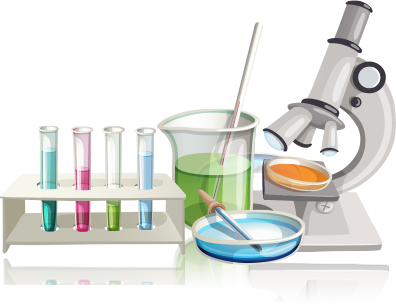Heating a substance makes its atoms and molecules move faster. This happens whether the substance is a solid, a liquid, or a gas. It’s not easy to see it happen in a solid but let’s try it for a liquid and a gas. See if you can tell that heat makes molecules move!
Here's what to do:
- Place some ice in a large cup and add water to make ice water. After the water is cold, pour the ice water (without the ice) into a cup so that it is about ¾ full.
- Have your adult partner help you add hot water to another cup until it is ¾ full.
- At the same time, you and your adult partner should put one drop of yellow and one drop of blue food coloring on the surface of the hot and cold water.
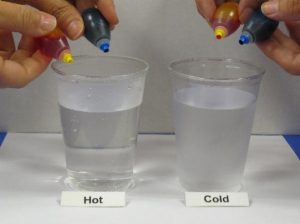
What do you notice about the way the food coloring moves in the two cups?
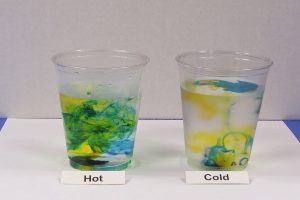
What to expect
The food coloring in the hot water will move around and mix more and become more green than the food coloring in the cold water.
What's happening in there?
Heat is a form of energy. The heat energy from the water makes the water molecules in the hot water move faster than the water molecules in the cold water. The faster moving molecules in the hot water bump into the food coloring molecules more often and with more force and move them all around faster than the slower moving water molecules in the cold water.
What else could you try?
You could see if heating the molecules of a gas makes those molecules move faster. Let’s try it!
What you'll need:
- Hot tap water
- Cold tap water
- 3 plastic cups (wide enough for plastic bottle to fit in)
- 8 oz plastic bottle (from bottled water)
- Liquid dish detergent
Be safe
Be sure to review the safety instructions on page 1 before proceeding.
Here's what to do:
- Add hot water to one cup and cold water to another cup until they are each about half-full.
- In a separate empty cup, make a detergent solution by mixing ½ teaspoon of liquid dish detergent with 1 tablespoon of water.
- Lower the open mouth of the bottle into the cup with detergent. Carefully tilt and lift the bottle out so that a detergent film covers the opening of the bottle.
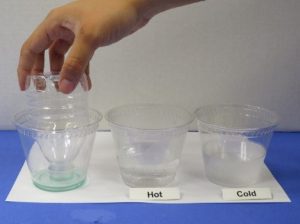
- Slowly push the bottom of the bottle down into the hot water. What happens?
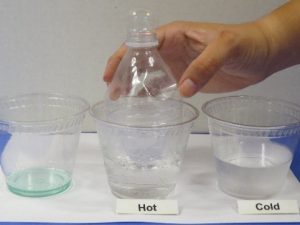
- Now push the bottom of the bottle into the cold water. What happens?
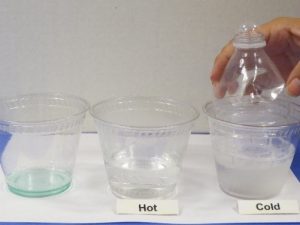
What to expect
When the bottle is in hot water, a bubble will form on the top of the bottle. When the bottle is placed in cold water, the bubble will shrink.
What's happening in there?
When the bottle is placed in hot water, the heat energy from the water makes the molecules in the gas inside the bottle move faster and spread further apart. As they spread further apart, they push against the detergent film and form a bubble.
When the bottle is then placed in cold water, the gas molecules slow down and the bubble shrinks.
